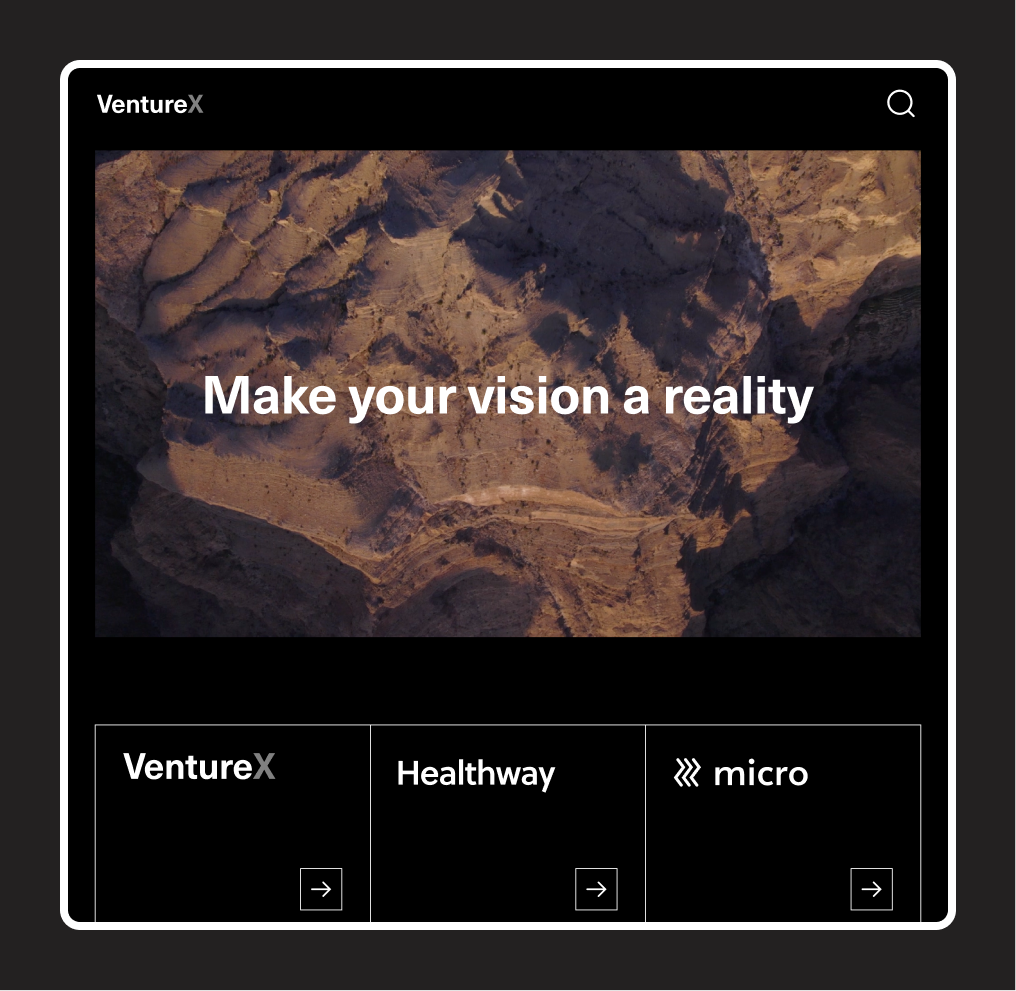What is corporate identity?
Corporate identity refers to the distinct characteristics that define and differentiate a company from others.
Your corporate identity comprises visual elements, communication style, and organizational culture. A well-defined corporate identity is crucial because it builds recognition, trust, and loyalty among customers, employees, and investors.

Corporate identity vs. brand identity
Corporate identity and brand identity have similarities but serve different purposes.
- Corporate identity is the overarching image of the entire company. It’s how your company presents itself to all its stakeholders, including employees, investors, and the general public.
- Brand identity has the same elements as a corporate identity but is tied more closely to how your target audience perceives your product or service. It includes visual and messaging guidelines for communicating your product or service’s value proposition to consumers.
To maintain consistency, corporate and brand identities share visual elements like logos and color palettes. This approach ensures that every touchpoint, whether corporate or product-focused, reinforces the overall image of the company.
In essence, a strong corporate identity supports and enhances your brand identity, so both identities are cohesively tied together.
4 key elements of a corporate identity
A well-rounded corporate identity is built on four key elements that ensure consistency and recognition.
Logo and visual identity
Consistency in visual elements like logos, icons, and graphics is crucial for a cohesive corporate identity. A well-designed logo serves as the face of the company, making it easily recognizable. Ensure your logo is uniform across all platforms and materials to maintain a professional and consistent image.

Source: uber.com, takeaway.com, tiktok.com, budweiser.com, brand.sinch.com, canalplus.com
Corporate colors and typography
Colors and fonts are powerful tools for conveying your brand’s personality. Choose colors that reflect your brand’s values and personality and use them across all communications. Similarly, select typography that aligns with your brand’s voice and ensure it’s consistently used to create a visually appealing and coherent identity.

Brand voice and messaging
Developing a unique brand voice helps craft consistent messaging across various channels. Your brand voice should reflect your company’s values and resonate with your target audience. Maintaining this voice in all communications is essential to building a strong, recognizable brand identity.

Corporate culture and values
Aligning your internal culture with your brand identity is vital. Communicate your corporate values clearly and ensure they are reflected in your workplace culture. This alignment not only strengthens your corporate identity but also fosters a sense of belonging and loyalty among employees.

How to create your corporate identity
Next, you'll collaborate with designers, creatives, and other stakeholders to create a corporate identity that truly represents your brand.
1. Conduct a brand audit
Use a brand audit to review and evaluate your current corporate identity, which will better equip you to refine and strengthen it.
Start by thoroughly examining all existing brand materials, including logos, color palettes, typography, marketing collateral, and internal documents. Evaluate these elements for consistency and alignment with your company’s values and mission. Gather feedback from stakeholders, employees, and customers to understand how your brand is currently perceived.
Identify inconsistencies in visual elements, messaging, and brand perception. Determine if your logo is outdated and if your brand colors, typography, and voice reflect your brand’s personality. Reviewing these elements will help you pinpoint where changes are needed to create a cohesive and compelling corporate identity.
2. Develop a brand strategy
A strong brand strategy ensures all your branding efforts align with your objectives and your audience’s needs, creating an impactful corporate identity.
First, define clear objectives and goals for your brand. These should align with your company’s overall mission and vision. For example, you may want to increase brand awareness, enhance customer loyalty, or enter new markets. When setting your goals, aim to make them as specific, measurable, achievable, relevant, and time-bound (SMART) as possible to provide a clear direction for your brand strategy and to help track progress.
Once you’ve set your objectives, the next step is to define your target audience. Conduct market and competitor research to understand who your potential customers are, what they need, and how they behave. Analyze demographic data, psychographic profiles, and buying patterns. Additionally, study your competitors to identify gaps in the market and opportunities to make your brand stand out.
3.Design visual elements
Developing visual elements that accurately represent your corporate brand helps create a distinctive and professional image that stands out in the market and resonates with your audience.
Work with your designers to develop all of the visual elements of your corporate identity, including your logo and other visual identifiers, colors, and fonts. Collaborate with them to come up with the best visual representation of your brand.
Once the visual elements are designed, write clear guidelines outlining how each element is used across various platforms and materials. Include specifications for logo usage, color codes, typography rules, and any other visual identifiers. It’s also helpful to create templates for various use cases, like co-branded content or internal training documents, so employees can easily create on-brand materials.

For inspiration, check out TikTok’s brand book, which showcases how the company maintains consistency and clarity in its visual identity.
How to implement & maintain your new corporate identity
Successfully implementing and maintaining your corporate identity ensures long-term consistency and impact. Here's how to make your brand cohesive and enduring.
1. Establish brand guidelines and standards
Creating comprehensive brand guidelines is crucial for ensuring all employees can understand and embody your corporate identity. Your guide should include your visual elements and guidelines, plus your mission, vision, messaging, tone, traits, and other key branding components.
Share your guidelines and all corporate branding assets with employees so they can easily find and use them. Many companies use a digital brand-building platforms to manage and enforce their brand standards, ensuring everyone has access to the most up-to-date assets, standards, and resources. For example, Sinch has all its assets in one digital spot, and all the elements are separated into categories for easy access.

2. Use a digital asset management system
A digital asset management (DAM) system is essential for effectively managing and organizing all your company’s brand assets, including everything from logo files and brand components to finished marketing collateral. By centralizing these assets in a DAM system, everyone in your organization has access to the most current and approved versions, eliminating confusion and inconsistencies.
This streamlined access enhances collaboration, particularly for large or remote teams, and improves overall efficiency by making it easier to find and use the right materials quickly.

3. Keep assets centralized with a brand portal
A brand portal is a centralized online platform where you store all the resources and assets related to your brand, including your DAM system and brand guidelines. By centralizing these resources, a brand portal eliminates the risk of outdated or inconsistent materials being used, which can damage your brand’s integrity. It also enhances collaboration by providing a clear, organized space where all brand elements are easily accessible.
This approach simplifies onboarding for new employees and partners by giving them instant access to brand guidelines, templates, and approved assets, ensuring everyone is aligned with the brand’s vision and standards from the start. Additionally, a brand portal supports ongoing brand management by making it easier to update and distribute new brand elements, maintaining consistency and coherence across all channels and touchpoints.

4. Train your staff on the new branding
Training is essential to ensure employees understand and correctly use the new branding materials, maintaining a cohesive corporate identity. Without proper training, employees may misuse brand assets, leading to inconsistencies.
Conduct training sessions to explain brand guidelines and demonstrate correct usage. Provide accessible resources, like brand manuals and online tutorials, to reinforce learning. Use these training sessions to instill a deep understanding and appreciation of the brand’s values and identity. Encourage employees to internalize these values, making them more likely to naturally engage with your brand in their daily roles, fostering a culture of brand ambassadorship.
5. Remain consistent in your brand communications
Maintaining consistency across all channels helps you build recognition with your audience.
To remain consistent, use a unified brand voice and style guide for all communications, ensuring that messaging is aligned across social media, websites, emails, and print materials. Schedule regular reviews to update your brand guidelines to reflect any changes or new strategies.
Employ a central approval process for all brand-related content to ensure all published content meets your established standards. Use digital tools, such as a brand portal or a DAM system, to keep all brand assets and guidelines easily accessible and up-to-date. This systematic approach helps maintain a cohesive brand identity, enhancing your brand’s credibility and impact.
Ongoing corporate identity management
Regularly monitoring and updating your brand is crucial for staying relevant and competitive. DAM systems and brand portals facilitate this by providing a single source of truth for all of your up-to-date brand assets and guidelines. These tools enable continuous evaluation and adjustment of your brand.
Regular annual or biannual meetings with stakeholders and executives are also essential to assess the brand’s performance and determine if refinements or rebranding are needed. This proactive approach ensures your corporate identity remains consistent, impactful, and aligned with evolving market trends, keeping your brand strong and recognizable.


